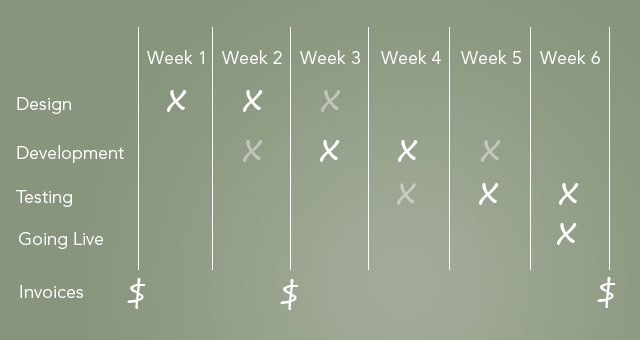My business model is based upon web design, coding, and managing projects. In this blog post I am going to explain how I manage projects. This process doesn’t always go as well as expected, but you might be able to tweak your next project and get an even better chance of a success rate.
The first tip is making sure you have a clear objective. There are two parts to the main objective.
- Respect the boundaries of the project and keep the client’s best interest in mind.
- Take the time to be sure you will get a profit once the project is completed.
When I create a statement of the goals and objectives of the project, I am sure to cover these bases:
- The complexity of the project, and how much time in total the project will take.
- Get together with all of the team members to discuss any potential problems and be ready to troubleshoot.
- Discuss who will be doing what, when, and for how much money.
Project managers are able to conform to all the problems that will arise during the process of completing a project. One way to eliminate problems from the start is from the moment you first initially contact a “prospect”, be up front and ready to listen.
Issues that are happening often are project managers encountering the “scope creep”. The “scope creep” is when a client has approved your quote and the work agreed upon, however as you begin to get work done, the client adds on additional extras here and there. The agreed upon project could be a simple website, but ends up being a website with additional pages, then expect SEO. The client will express how the site can’t function properly unless the extras are also included. This situation is not only awkward, but the profit margins are decreasing rapidly. What is the solution to this common problem?

Above, my typical schedule for small and medium size website projects. Stages overlap each other and delays happen, but having a plan as a point of reference is must. This is a very simple schedule, but clear enough for clients and good enough for me. Years ago when I started with a project, I would get behind a few weeks. My clients would have to remind me. Huge shame on me, but lesson learned.
Compiling The Most Detailed Brief As Possible.
When commencing with the prospect, it is so important to make sure every detail is covered for the project brief. A project brief will prove its value, because not only will you be able to develop a solid pitch, but your presentation to the client will also be detailed. An important note about the pitch is it must be developed according to the prospect’s exact needs and wants. Should your client change their mind about the pitch or requirements, you will need to communicate with your client and relay the information about alterations will require additional work and additional fees.
The “To Do” List Needs To Be Clear And Concise
After you have received the go-ahead to begin the project, its time to get moving!
Moving to step two of our process involves either writing up a contract for the client to sign or sending the client a “Letter of Agreement” with your invoice. The contract indicates exactly what the client will receive, and exactly what your services will be. Payment of the invoice indicates agreement to the terms and conditions set out in the Letter of Agreement.
And remember:
A project that is executed successfully is based on solid communication between the client and yourself.

You must belogged in to post a comment.